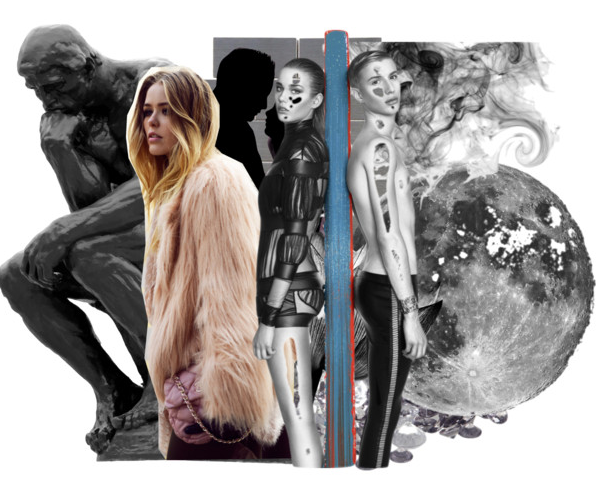In the past few years, the American LGBT+ community has been through ground breaking accomplishments such as same sex marriage equality, withdrawal of “Don’t ask, don’t tell”, and many other strides in visibility and acceptance. Though the fight for equality is very very far from over, the community has changed in extremes and being a part of generation Z, we’ve been in the frontlines watching these large milestones happen. As LGBT+ acceptance grows and fits in more and more with norms, the introduction and visibility of less of the black and white identities have been shown and are slowly fitting their way in modern day media.
Born in 1999, I grew up with very black and white ideas of things. You’re either a boy or a girl, gay or straight, etc. However, as I aged and become more comfortable questioning myself, I began to realize this isn’t really the case. Though the ever so famous pride flag is known for it’s ROYGBIV stripes, there’s actually so many other ways one can (or not at all) label themselves that isn’t a “color” on the spectrum. As we progress and the idea of not being straight or your assigned at birth gender becomes more and more normalized, so is the beginning of a more expressive and self aware society.
Generation Z is a group that has been born into a world of so many advancements. Most of us can’t remember life without a computer or cell phone or how to get anywhere without Google Maps. The creation of the internet and our generation’s attraction to it has also made us so much more questioning of our identities than any other previous generation. Instead of having to stick to the norms of our outside environments, we can easily connect with about anyone who brings a completely new set of ideas and interests, making information travel so much faster. Though nonbinary, pansexual, asexual, etc people obviously existed long before our iPhones did, social media and online publications have made these identities so much more visible and accessable to learn about. It’s hard to be unaware when you’ve got about every resource out there at the typing of a google search.
So why are so many of the teenagers of generation Z living in this “grayscale” of sexuality? How did we find these rather invisible and not quite accepted identifiers?
“I’m incredibly fluid when it comes to my gender and don’t feel acceptance of either the male or female ideas and roles.” says Alex,16.
As Kira,17, stated, “I have never felt like a boy but didn’t associate myself with being female. I had no idea what non binary meant until last year, but have always been so. I think it’s all about exposure. Just like so many people in history have been closeted gays or trans people, non binary isn’t a new thing. It’s just now more common and ‘out there”. These points on the spectrum have always been there, just now they are receiving more attention and exposure. As the citizens of generation Z grow older, I predict there will definitely be a decline in the need to label oneself or try and fit in with one of the classic ROYGBIV areas of the spectrum.









No comments:
Post a Comment